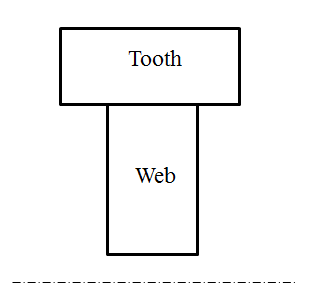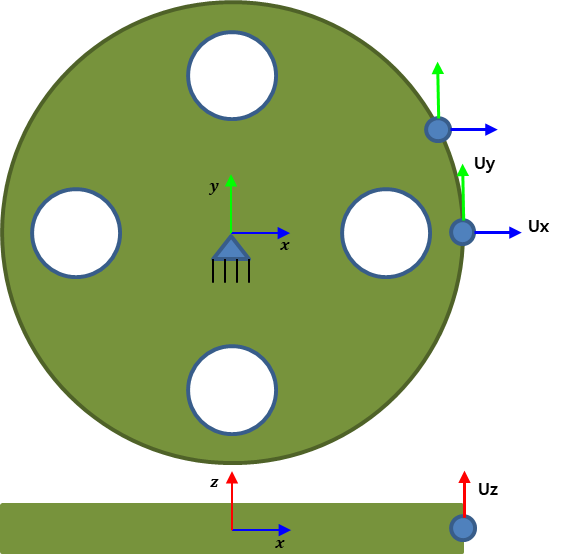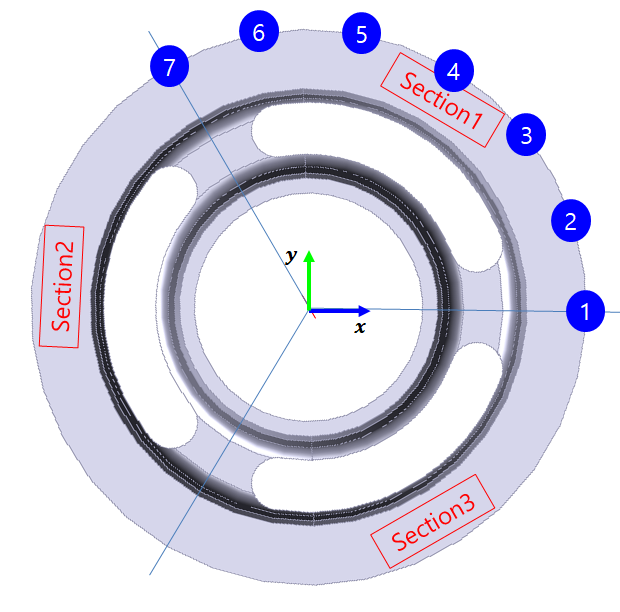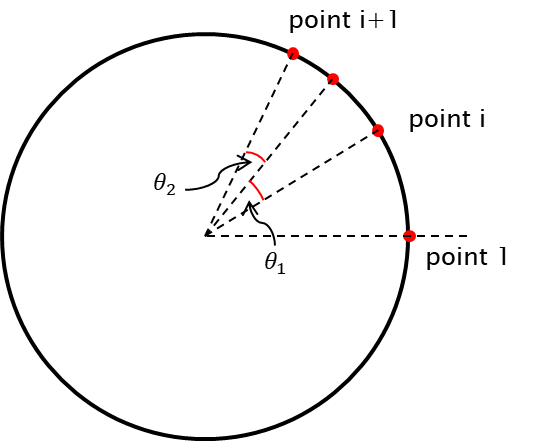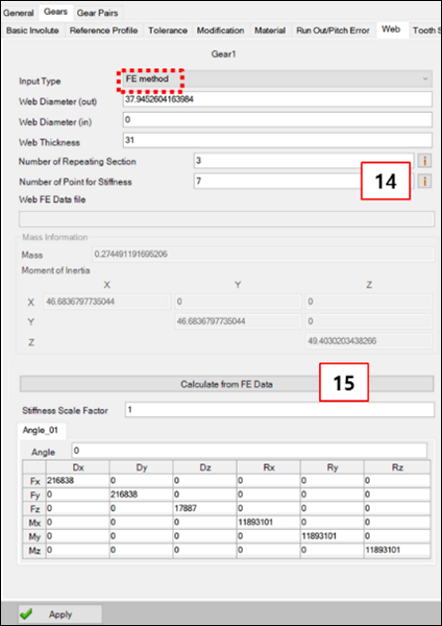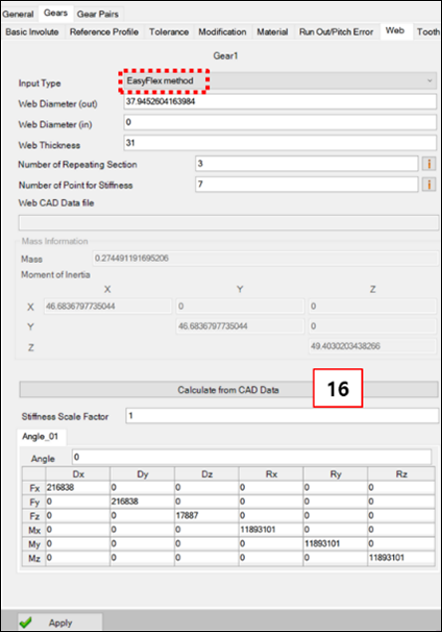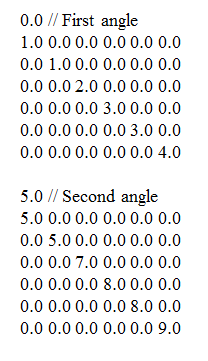The gear web is important in an aspect of compliance. The web shape and thickness influence to compliance characteristic of the gear. The stiffness of web can be modeled with three types of the rigid, constant, and variable.
Rigid: Create the fixed joint between tooth and web
Constant: Create the matrix force by using the user defined web stiffness
Variable: Create the matrix force by using the user defined web stiffness for the angle.
The coordinate system must be considered to enter the web stiffness. If FE or EasyFlex model is tested to get the stiffness matrix, the coordinate system must coincide with the coordinate system of the gear set. The center point of web must be fixed to get the stiffness matrix. And then, the angle of a loading point must be considered as following figure.
The stiffness matrix which is a positive semi-definite matrix can be taken by measuring the reaction force of the fixed joint while enforcing a small translational motion on a range.
The stiffness matrix of web may be calculated as shown in Equation 14–25.
 | (14–25) |
If the variable type is selected, the stiffness must be tested for every angle θi and θ1 must be in the +x axis.
The stiffness matrix between the two angles is calculated as following equation.
(14–26) |
Figure 14.177: Parameters in the Web tab
| Parameter | Description |
Dimension (Range) |
| 1. Input Type |
Select a input type to input the web stiffness. - User input - FE method - EasyFlex method | N/A |
| 2. Web diameter (out) | Use to set the outer diameter of web. This value is used only for the geometry of web only. | Length |
| 3. Web diameter (in) | Use to set the inner diameter of web. This value is used only for the geometry of web only. | Length |
| 4. Web thickness | Use to set the web thickness. This value is used only for the web geometry. | Length |
| 5. No. of Repeating Section | Use to set the number of repeating section. | N/A |
| 6. Mass | Use to set the web mass. | Mass |
| 7. Moment of inertia | Use to set the mass moment of inertia. | Mass*Length^2 |
| 8. User Input Mass Information | Use to set the mass information. When selected, mass and moment of inertia information can be input directly. When cleared, mass information is calculated using density, diameter, and thickness. Cleared by default. | N/A |
| 9. Web type |
Select the type of web. There are three options as follow. - Rigid (no compliance) - Constant(one compliance) - Variable(various compliance) | N/A |
| 10. Import | Use to set the property file of the web stiffness. This option available only for constant and variable. The file format is described in Figure 14.178: File format for variable type. | N/A |
| 11. Add / Remove stiffness | Use to add or remove the matrix of stiffness. | N/A |
| 12. Stiffness matrix | Input the stiffness matrix. This parameters can be input directly or can be input by the stiffness property file. | N/A |
| 13. Damping ratio | Use to set the damping ratio. | N/A |
| 14. No. of Point for stiffness. | Use to set the number, how many stiffness to be calculated. Refer the figure about "No. of Repeating Section". | N/A |
| 15. Calculate from FE data | If your use "FE method" for "Input type, you have to select an FE file by using this button. The simulation will then be started to get the stiffness. | N/A |
| 16. Calculate from CAD data | If your use "EasyFlex method" for "Input type, you have to select a CAD file by using this button. The simulation will then be started to get the stiffness. | N/A |
The stiffness matrix importing from a file must consists of 6-6 matrix as shown in the figure below.



